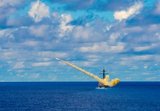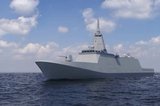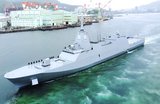MBDA receives three Sea Viper contracts
Sea Viper has been the primary air defence system for UK Royal Navy’s Type 45 destroyers. (Photo: MBDA)
MBDA will upgrade the UK Royal Navy’s (RN’s) Sea Viper air defence system under three contracts worth £400 million (US$508 million), two under SVE and the third to provide extended and enhanced in-service support contract for Sea Viper for a further five years.
The first two contracts will enable the Type 45 Destroyers to defend the Carrier Strike Group against anti-ship ballistic missiles.
The main element of SVE will see the Royal Navy’s existing Aster 30 missiles receive upgraded Block 1 warheads and new guidance and seeker software to deal with new anti-ship ballistic missile threats, while retaining its world leading anti-air warfare capability.
The Type 45’s Sampson multi-function radar, and combat management system will also be upgraded. An integrated team from MBDA across the UK, France and Italy has been conducting the work together with BAE Systems Maritime Services.
The second part of Sea Viper Evolution will be an assessment phase evaluating the addition of the new Aster 30 Block 1NT missile to the Type 45 destroyers, as well as further improvements to the radar and the wider weapon system.
More from Naval Warfare
-
![Future of the Canadian Patrol Submarine Project is still unclear]()
Future of the Canadian Patrol Submarine Project is still unclear
The Canadian government remains tight-lipped on the timeline and funding required for the next steps of its Canadian Submarine Patrol Project, which should offer improved capabilities for the country’s navy.
-
![Thales’ new Sonar 76Nano could equip UK Royal Navy on anti-submarine warfare missions]()
Thales’ new Sonar 76Nano could equip UK Royal Navy on anti-submarine warfare missions
The new sonar is designed to equip uncrewed underwater vessels, with the potential to be used by the Royal Navy for its Atlantic Bastion and Atlantic Net missions.
-
![Hanwha wins Australian government approval to increase its stake in Austal]()
Hanwha wins Australian government approval to increase its stake in Austal
The contract would mean the two shipbuilders can collaborate strategically and enhance shipbuilding capabilities in Western Australia.






















